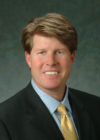HOME | ABOUT US | MEDIA KIT | CONTACT US | INQUIRE
HOME | ABOUT US | MEDIA KIT | CONTACT US | INQUIRE
On inflation, interest rates and illiquidity.

The 1986 movie, Three Amigos! is about three movie stars desperately struggling to remain in the limelight. In today’s economy, the variables in the limelight are the three “I”migos: inflation, interest rates and illiquidity.
Inflation: In early 2021, the Consumer Price Index began spiking, moving from less than 2 percent to more than 8 percent due to the unprecedented response to the global pandemic. Massive liquidity infusions increased demand while shutdowns curbed supply. The constant debate today is how much inflation will be transitory. Inflation has been broad based, from commodities in the energy and agricultural space, to shipping rates and wages, housing and transportation—all have been drivers in spiking inflation.
Academic studies suggest optimal core inflation, excluding food and energy, is between 2 percent and 3 percent. In April, core CPI hit 6.2 percent, giving consumers, businesses and the Federal Reserve some heartburn. With moderate inflation businesses can increase prices and provide higher wages, while still growing earnings that drive equity prices higher. Uncontrolled, it crushes demand and earnings—a bad combination for the economy and for financial markets.
However, some businesses may benefit from higher inflation. If a company has pricing power and can pass along higher costs to the consumer, higher inflation may not be as damaging. The industries with pricing power today include energy, chemicals, steel, trucking and more. Industries that are experiencing the weakest pricing power include: digital, pharmaceuticals and financial companies. We think some of the primary inflationary variables will be transitory. As supply chain and labor force issues abate, inflation should ease.
Interest Rates: The Fed is in the middle of an experiment, letting the economy run hot and allowing inflation to build, hoping to control inflation. The Fed’s narrative has been fluid over the past year, however, today it appears they have an aggressive plan for hiking interest rates. Due to the experiment, the aggressive path is unusual with limited historical data. We expect the Fed to increase Fed Funds another 175 basis points by year-end, ending the year at 2.75 percent.
In 1994 and 1995, the Fed hiked rates by 300 basis points over a 12-month period, including 50 and 75 basis points hikes. The expected path of Fed Funds for the remainder of the year appears to be quite similar. If the financial markets behave as they did then, longer-term yields will continue to rise until rate hikes ebb. Risk-based assets such as stocks may not perform well during the rate hiking cycle but could skyrocket higher as the cycle ends. In early 1994 the Fed started to increase rates and increases continued throughout the year, with the S&P 500 posting a 1.7 percent total rate of return. The rate hiking cycle ended in early 1995. That year the S&P 500 gained a hefty 37.5 percent. If history is close to repeating itself, rates will increase squashing inflation and economic activity will slow, but just like 1994 and 1995, our economy may avoid a recession.
Illiquidity: Given the government’s $5 trillion injection of cash into our economy during the COVID recession, money supply (M2) growth soared at the highest rate in our history with 26 percent annual growth in early 2021. Almost a year after the cash injections, aggregate cash reserves continue to build, now at a record $21.9 trillion. Consumer demand for goods and services continues to mushroom, even as stimulus is reduced.
Liquidity was a significant driver of growth. The pressing question is what will happen when liquidity is taken out of the economy? As M2 growth subsides and demand remains firm, overall liquidity will slowly erode. While we are a long way from any type of potential illiquidity, current trends are moving in the direction of steadily reduced liquidity within our system. If that persists, lower liquidity could become a growing issue, slowing economic activity. It remains to be seen how long and far this trend will run. The combination of higher interest rates and the potential of illiquidity, is a recipe for slower GDP growth in the U.S.
Recession Potential: An increase in rates doesn’t imply a looming recession. In 1995, the economy avoided a recession and equity markets performed well. Our economy has experienced rising rate cycles without falling into recession at multiple times in our history. The key is whether the current inflation spike manages to naturally move lower, with some help from higher interest rates.
If inflation recedes, we have a reasonable chance of working through this cycle of rising rates without a recession. If inflation proves stubborn, requiring more aggressive action from the Fed, then the likelihood of a recession will begin to rise. At this time, we think GDP growth in 2022 will be approximately 2.4 percent. The odds of a recession occurring in late 2023 are increasing.
The three “I”migos will give us clues on how these odds are changing.